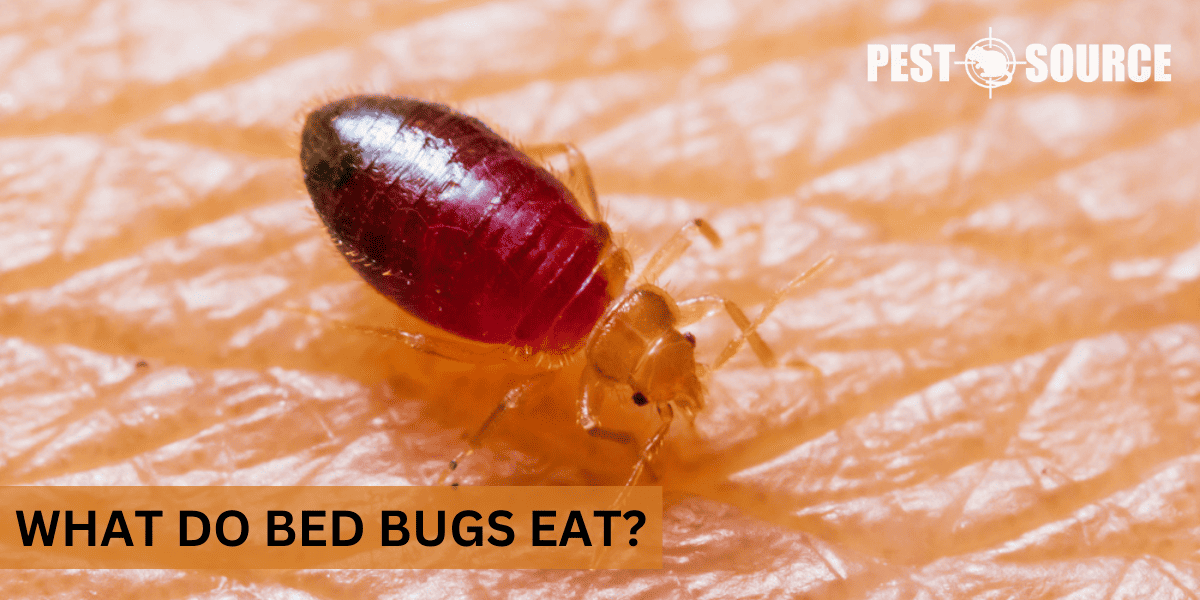Bed bugs feed exclusively on the blood of warm-blooded animals, with a preference for human blood. They require blood meals for growth, development, and reproduction. Discover more about their feeding habits, frequency of feeding, and survival without a meal in the full article ahead.
POINTS
- Bed bugs solely feed on the blood of warm-blooded mammals, favoring human blood due to their proximity and ease of access. Without blood, they cannot survive or reproduce.
- Attractions to bed bugs include the warmth of human bodies and the carbon dioxide we exhale. This combination of factors makes humans their primary targets.
- Bed bugs typically feed at night, spending approximately 5-10 minutes drawing blood from their hosts. Once full, they will retreat to their harborages to digest, molt or lay eggs.
- While it’s possible for bed bugs to feed on other animals like dogs, cats and rodents, their preference centers on humans. They live in our environment, not on us, only venturing out from their hiding places when they need to feed.
- Understanding the dietary habits and feeding patterns of bed bugs is crucial for their prevention and control. This knowledge informs strategies that disrupt their feeding cycle, leading to effective bed bug management.
What do Bed Bugs Eat and Why Do They Prefer Blood?
The diet of a bed bug is astonishingly singular. These pests primarily feed on blood – a diet built around siphoning the life juice of their unknowing hosts.
What is the primary food source of bed bugs?
This question has a straightforward answer: Blood. The sole food source for bed bugs is the blood of warm-blooded mammals, especially humans.
What type of blood do bed bugs prefer?
Within their blood-rich diet, bed bugs have a particular fondness for human blood. Though they won’t hesitate to feed off other mammals like your pets, their proximity to human hosts ultimately makes our blood their prime delicacy.
Do bed bugs need blood to live and reproduce?
Yes, indeed. The nourishment from blood is crucial to the survival and reproduction of bed bugs. Without feasting on blood, bed bugs cannot grow or produce eggs, making blood meals a mandate for their life cycle.
For a deeper understanding of their life span, please visit our detailed post on how long do bed bugs live.
Why Do Bed Bugs Prefer Blood and Particularly Human Blood?
You might wonder, what’s so special about our blood? The attractiveness of human blood to bed bugs is a combination of factors that make us prime targets.
Why do bed bugs like blood?
Bed bugs were designed for a sanguivorous, or blood-feeding, lifestyle. Their mouthparts act like tiny hypodermic needles to pierce the skin and access the blood vessels. The nutrients in blood provide the sustenance bed bugs require for development and reproduction.
What type of blood do bed bugs like the most and why?
If we are speaking in terms of preference, human blood sits at the top due to our readily accessible and abundant nature. Our homes make a cozy environment for these pests, and our constant presence makes for a feast never far.
What are the factors attracting bed bugs to humans?
Several factors make us irresistible to bed bugs. First, our body warmth is a signal for them that a meal is available. Secondly, the carbon dioxide we exhale acts as an attracting agent for these tiny pests. Combine these cues with the lack of body fur compared to other mammals, and you’ll understand why we’re an all-you-can-eat-buffet for bed bugs.
Do Bed Bugs Need Blood for Their Life Processes?
Understanding the diet of bed bugs is indeed critical, but it’s also essential to know why blood is so important to their life processes.
Do bed bugs need blood to live and reproduce?
Yes, blood plays a fundamental role in the life and reproductive processes of bed bugs. They cannot survive without feeding off blood. Similarly, for bed bugs, the path to reproduction is through a blood meal. Female bed bugs need to feed on blood to produce healthy eggs.
Why do bed bugs need blood?
Bed bugs need blood for their physical growth and development. Blood rich in proteins and nutrients aids them in molting and helps female bed bugs in egg production. The lack of blood prohibits normal growth, pushing them to a starvation state.
How do Bed Bugs Feed?
Observing how bed bugs feed can unveil interesting insights into their dietary habits.
How do bed bugs eat?
Bed bugs feed by piercing the skin of their host with their specialized mouthparts. They inject saliva, which has anesthetic properties, numbing the feeding spot and allowing them to feed undetected.
How do bed bugs feed on their hosts?
Bed bugs usually feed on their hosts while they are asleep during the night. Unnoticed, they can spend around 5-10 minutes feasting on blood before they retreat to their hiding spots.
How long is each feeding session?
A single feeding session for a bed bug typically lasts from 5 to 10 minutes. Once satiated, they will crawl back to their hiding spots until the next feeding urge arises.
How do bed bugs identify their food source?
They tap into their environment’s subtle cues to find a host. Bed bugs are attracted to warmth and the carbon dioxide exhaled by mammals, mainly humans. These signals lead them to their lifeline – our blood.
What Do Bed Bugs Eat Besides Blood?
So, is blood the only item on their menu? Let’s see what else might bed bugs consider as food.
What do bed bugs eat other than blood?
Interestingly, the answer is nothing. Yes, bed bugs are strictly hematophagous, which means their nutrition comes exclusively from blood.
Do bed bugs eat food or dead skin?
Contrary to some myths, bed bugs do not eat leftover food, dead skin, or any organic matter other than blood.
Can bed bugs survive by feeding on non-blood food sources?
Without a blood meal, bed bugs enter a state of dormancy. They cannot feed on anything but blood. In the absence of a blood source, they can survive for several months, but extreme starvation leads to eventual death.
Can Bed Bugs Feed on Other Animals?
Although focused on human blood, bed bugs can vampirize other warm-blooded creatures. Let’s dig into their animal feeding habits.
Do bed bugs feed on dogs, cats, birds, and rodents?
Despite their preference for humans, bed bugs can and will feed on other warm-blooded animals. Cats, dogs, birds, and even rodents can fall victim to these tiny bloodsuckers.
Do bed bugs live on humans or other animals?
It’s a common misconception that bed bugs live on hosts. In reality, they live in the surrounding environment, not on their food source. They only interact with us or other animals during their feeding time.
Do any animals, such as mice, eat bed bugs?
Some predators like spiders, cockroaches, and centipedes are known to prey on bed bugs. However, these predators are not a reliable solution for controlling a bed bug infestation.
Are Bed Bugs Dangerous if Consumed by Humans?
With an often-disturbing curiosity, some people wonder about the consequences of accidentally consuming a bed bug.
What happens if a human accidentally consumes a bed bug?
Although the thought is revolting, accidentally ingesting a bed bug poses little to no threat to humans. They aren’t known to transmit diseases via ingestion.
Can humans eat bed bugs?
Technically yes, but understandably, eating bed bugs is neither recommended nor beneficial to humans.
Unusual Questions About Bed Bugs’ Diet
Even the more unconventional inquiries can shed light upon the mysterious diet of bed bugs.
Do bed bugs eat each other in cases of extreme scarcity of food source?
Under severe starvation, some species do resort to cannibalism. However, bed bugs prefer to enter a state of dormancy and can wait for several months until they find a proper blood meal.
Do bed bugs have blood in them?
Since bed bugs feed on blood, they do have their meal’s remnants circulating in their system. However, it would be misleading to say they have blood in the same way humans or other animals do.
What eats Bed bugs?
While bed bugs are notorious for feeding on human blood, there are indeed creatures in the natural ecosystem that prey on them. Known as natural predators, a few of the bed bug’s enemies include centipedes, spiders, cockroaches, ants, and some types of mites. Notably, the masked hunter insect (also known as “masked bed bug hunter”) is notorious for its propensity to eat bed bugs.
Additionally, some species of birds and bats may also eat bed bugs when they come across them. However, it’s important to remember that these predators are not a viable solution for a bed bug infestation, as they cannot eradicate a population of bed bugs and could potentially introduce new problems. For more in-depth information, explore our comprehensive post on what eats bed bugs.



